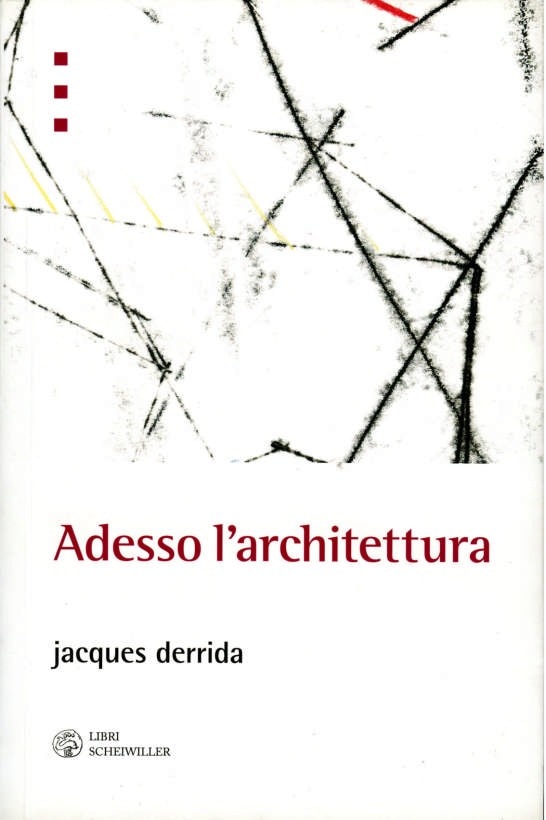Adesso l’architettura. Jacques Derrida
Scheiwiller, Milano 2008 (pp. 373, € 24,00)
In 1985, when Bernard Tschumi asked Jacques Derrida to work with Peter Eisenman on the design of a garden for the Parc de La Villette in Paris, the French philosopher was at the height of his international fame but had never made a direct foray into the world of architecture.
Derrida always appeared somewhat perplexed by the ease with which his deconstruction schemes were seized upon outside their philosophical framework. But in that particular case, the outcome of the joint venture was more productive due to the theoretical impact of Derrida’s thoughts than it was for the design consequences (the work with Eisenman was never executed).
Pointe de Folie – Maintenant l’architecture, the essay Derrida wrote for the occasion, was received and elaborated (not without misinterpretations) by a group of young architects who gave rise to a current that Philip Johnson formalised as Deconstructiviste Architecture in a MoMA exhibition in New York in 1988.
Adesso l’architettura, the book published by Scheiwiller and edited by Francesco Vitale, gathers a number of sporadic writings as yet unpublished in Italian (although Pointe de Folie is missing). Covering more than a decade, the texts effectively enable us to reconstruct the course of Derrida’s reasoning on architecture and how it has held up over time, nearly 25 years after that invitation for La Villette. Derrida saw architecture as the last bastion of metaphysics, “The art that is most resistant to what counts as destabilisation or deconstruction, because it is the soundest art” (p. 186), and he embarked on a systematic dismantling of its institutional axiomatics. After all, Derrida’s deconstruction had always focused on institutions and, more specifically, their rethinking and de-institution.
No differently from all the other western institutions, to Derrida’s eyes architecture could also be accused of having congealed around a huge costructum, an archi-structure of fundamental values – habitability, functionality, monumentality and aesthetics – that over-determine its practices like a hierarchical canon.
For the French philosopher, deconstructing this artefact meant questioning the priority of practice over theory, asking architecture to exercise thought, the first and most important action of which was to rethink itself.
As was typical of his elliptical and antiargumentative style, Derrida displaced the fundamental concepts of architecture to the limits of their meaning, but without denying them. He attempted to return the presumed transcendencies (metaphysics) to a plane of immanence where nothing is an absolute sign and everything – including architectural lemmas – must be reconsidered in the light of ideas of traces, deviation, deferred worldliness, deferral and transhumance.
Deconstructed architecture, the architecture of the event, of non-saturation and of incompleteness, is a thinking practice that poses the question of space as an open problem, without trying to control and define it once and for all (the greatest aspiration of modern architecture), leaving it free to embrace all the possibilities for the future.
Careful reading of the sequences of Derrida’s considerations in Adesso l’architettura reveals two highly interesting, albeit contradictory, things. On one hand, we see the frequent misunderstandings between the philosopher’s reasoning and the architects’ interpretations. Where the former raises problems and demolishes certainties, the latter often see solutions and new working models (the two texts A proposito della scrittura. Jacques Derrida e Peter Eisenman and Replica a Daniel Libeskind are significant in this regard). On the other hand, we see how Derrida’s interpretation is extraordinarily relevant to contemporary urban phenomena, such as identifying the problem of the post-political city’s transience and the ensuing responsibility towards future generations that belongs to a lasting architecture which is “maintained” alive (maintenant). The architecture of the next millennium, said Derrida, can only “maintain” itself up to its task via the, paradoxical, concept of abandoning the attempt to define space. But then it would probably also have to give up the name of architecture.


